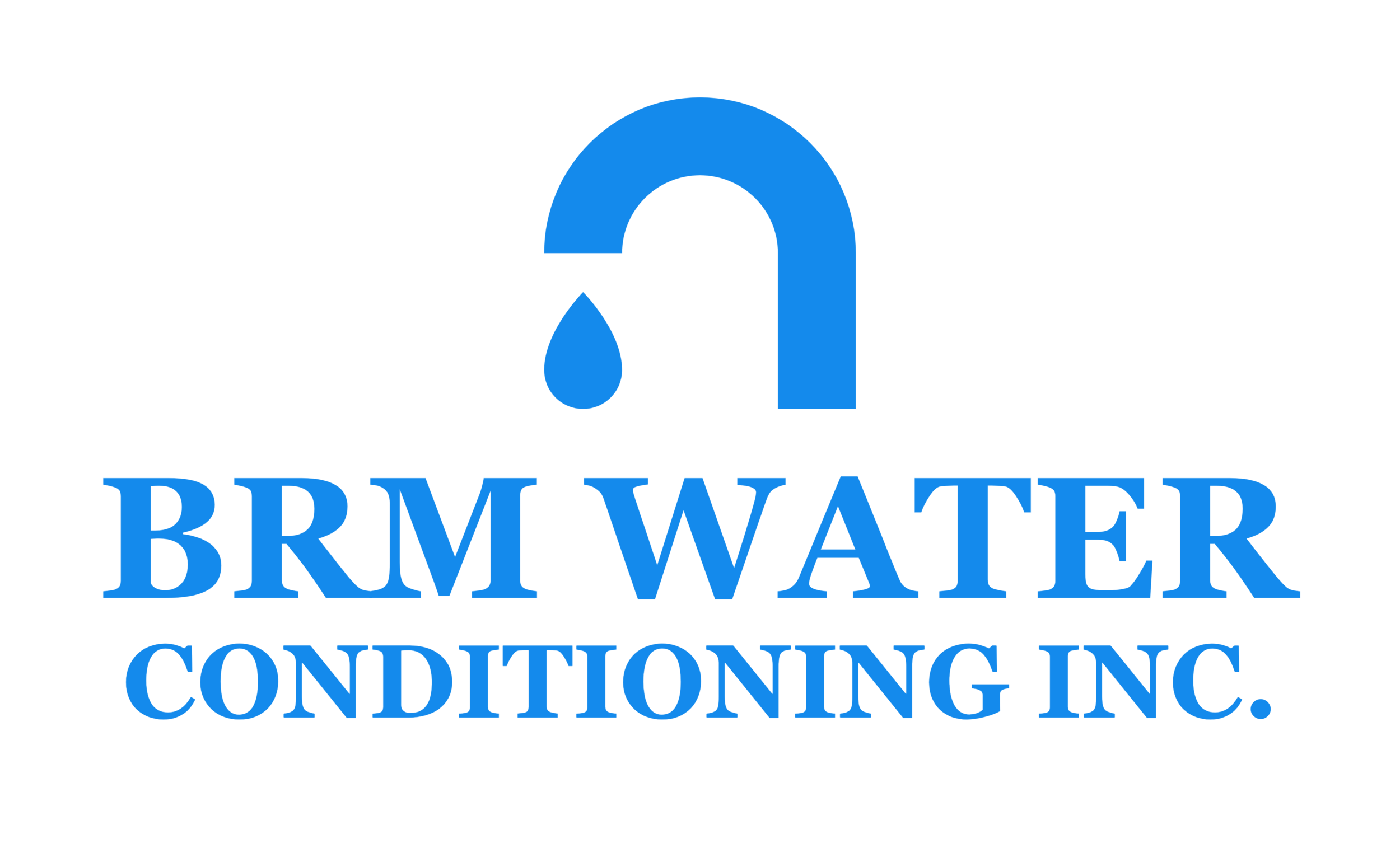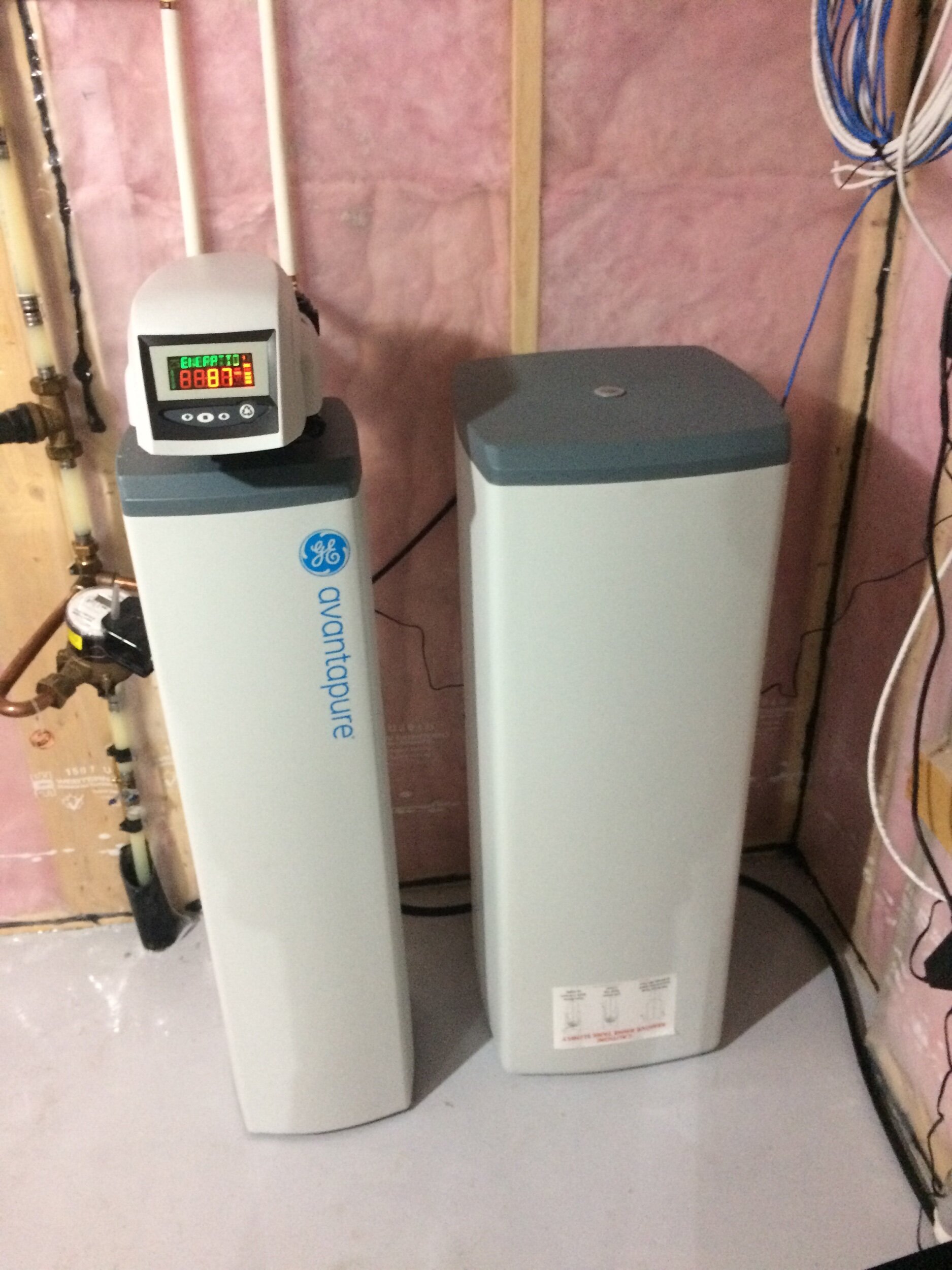WATER SOFTENER INFORMATION
HOW A WATER SOFTENER WORKS
Water Softening Process
Hard water enters the water softener system. As it passes through the resin inside the tank, the hard water minerals are attracted to the resin where they are left behind and the water is softened to service the home.
Regeneration Process (Softener Self Cleaning)
This normally takes place at 2:00 AM) Only once the resin becomes saturated with hard water minerals, the water softener system automatically goes into regeneration. This is the process that frees the resin of hard water minerals, During the Regeneration, brine water is drawn into the mineral tank and rinses the hard water minerals down the drain. Fresh water rinses the remaining brine water out of the system, leaving the system ready for service.
BASIC OPERATING INSTRUCTIONS
Starting out with your new softener, when the brine tank is empty normally you should add - two 20 kilo (43lbs) bags of any type of Sodium Chloride (Water Softener Salt). This normally will cover up the existing water level in the brine tank (which is approximately 8 to 24 inches).
Check the salt level approximately once a week.
Once you see that the salt level has gone down, till it has reached the water level, add one bag of salt, now you are one bag of salt above the water level.
Continue to this process, prior to adding the next bag of salt.
If you use this method to add salt to your softener, you should never have any problems.
If you have ran out of salt and your water is hard, don't worry. When you do add salt, you then have to push the Manual Regeneration Button (push and hold 5 seconds) to regenerate the softener so that it will produce soft water, (this will take approximately 2 hrs).
Remember if your water is hard your hot water tank(s) are full of hard water, you will have to wait until the softener has regenerated then it will take awhile for your hot water tank(s) to be replenished with soft water as it is used.
So avoid running out of salt.
SERVICING YOUR SOFTENER
Normally, your softener does not require professional servicing. This is what you do, to keep your softener maintained
RULE- Add one Bag of salt only when you see water in your brine tank.
Do not fill the Brine tank to the top with salt, or you are asking for a future expensive service call!
Ensure the softener is plugged into the electrical outlet.
Keep the timer set so that it reads the local time of day.
Adding salt; Most softeners have a water level in the brine tank (salt tank), which is determined by how hard your raw water is, that is coming into your home.
BASIC OPERATING INSTRUCTIONS
Starting out with your new softener, when the brine tank is empty normally you should add - two 20 kilo (43lbs) bags of any type of Sodium Chloride (Water Softener Salt). This normally will cover up the existing water level in the brine tank (which is approximately 8 to 24 inches).
Check the salt level approximately once a week.
Once you see that the salt level has gone down, till it has reached the water level, add one bag of salt, now you are one bag of salt above the water level.
Continue to this process, prior to adding the next bag of salt.
If you use this method to add salt to your softener, you should never have any problems.
If you have ran out of salt and your water is hard, don't worry. When you do add salt, you then have to push the Manual Regeneration Button (push and hold 5 seconds) to regenerate the softener so that it will produce soft water, (this will take approximately 2 hrs).
Remember if your water is hard your hot water tank(s) are full of hard water, you will have to wait until the softener has regenerated then it will take awhile for your hot water tank(s) to be replenished with soft water as it is used.
So avoid running out of salt.
Hardness
A common problem with water which contains dissolved compounds of calcium, magnesium and sometimes other divalent and trivalent metallic elements. The term hardness was originally applied to waters that were hard to wash in, referring to the soap wasting properties of hard water.
Hardness prevents soap from lathering by causing the development of an insoluble curdy precipitate in the water; hardness typically causes the build-up of hardness scale (such as seen in cooking pans). Dissolved calcium and magnesium salts are primarily responsible for most scaling in pipes and water heaters and cause numerous problems in laundry, kitchens, and bathrooms. Just as it builds up on things in the home it also builds up on your skin and hair. Hardness is usually expressed in grains per gallon (or ppm) as calcium carbonate.
Installing a water softener/ water conditioner will give you clean water thru out the home or business
Softening Benefits
A water softener removes minerals like calcium, magnesium, or iron from your water, effectively turning it from 'Hard Water' into 'Soft Water'. The key benefits of using a water softener in your home include:
Feel noticeably cleaner after showers or baths.
Use up to 60% less detergent while washing clothes and dishes.
No soap scum or mineral deposits on your showers or sinks.
Easier on your plumbing, reducing deterioration over time.

